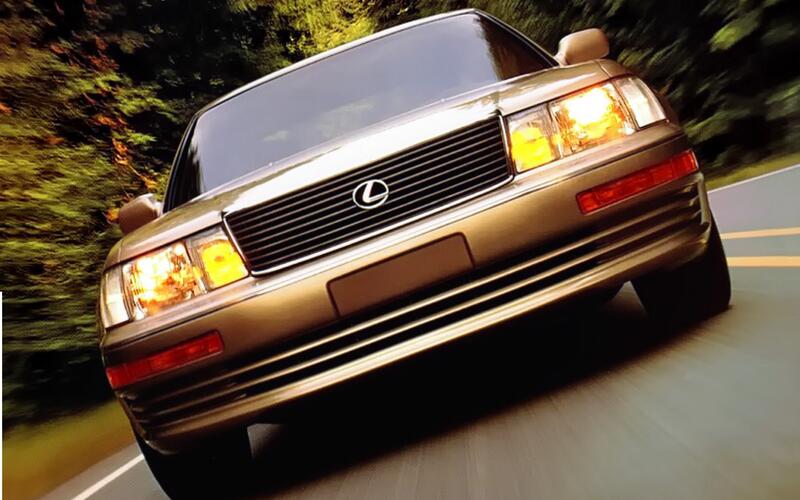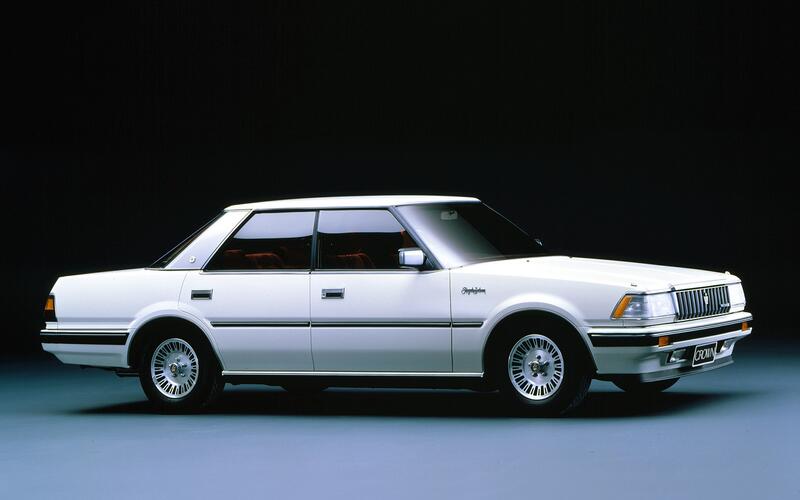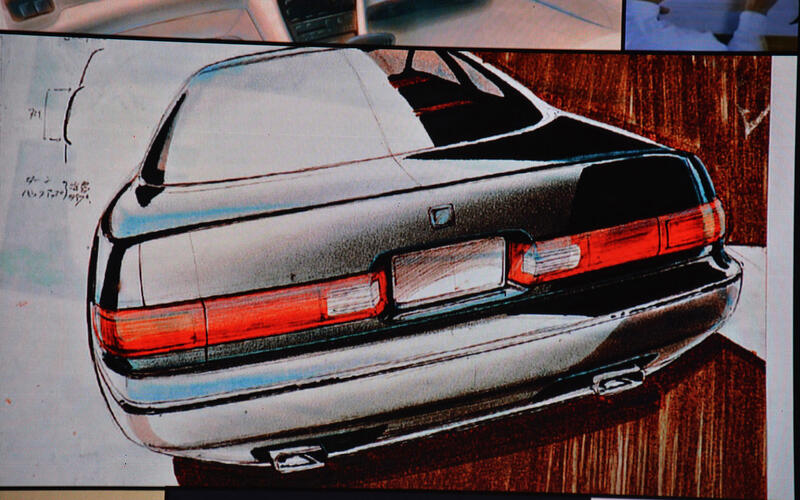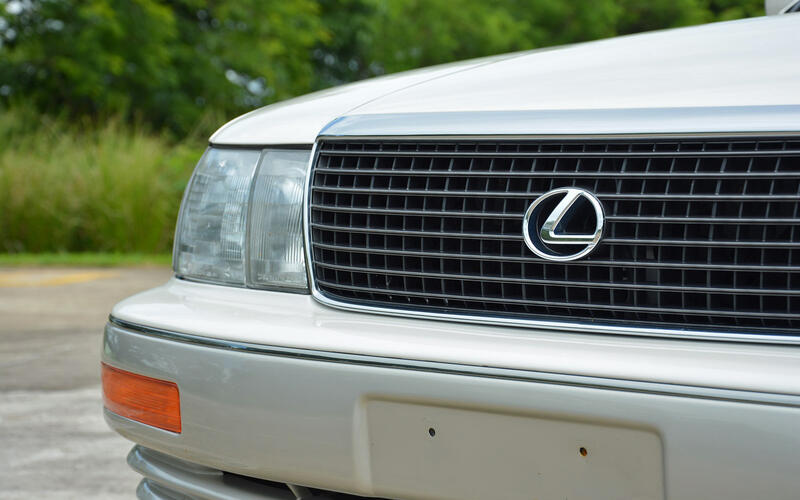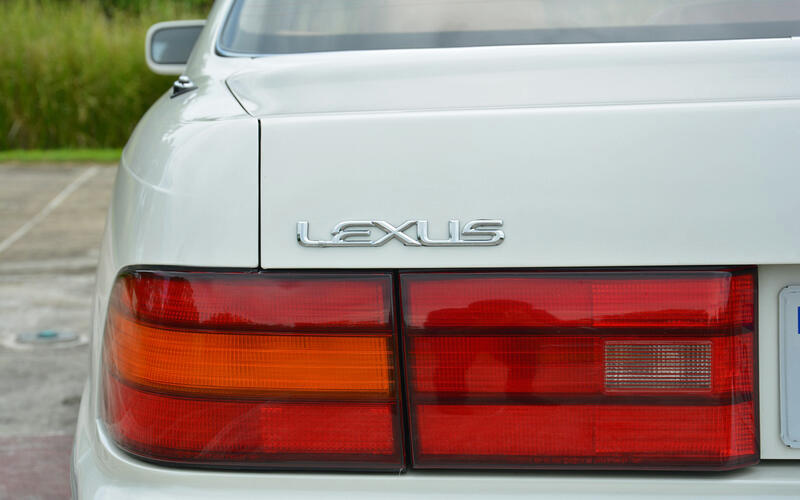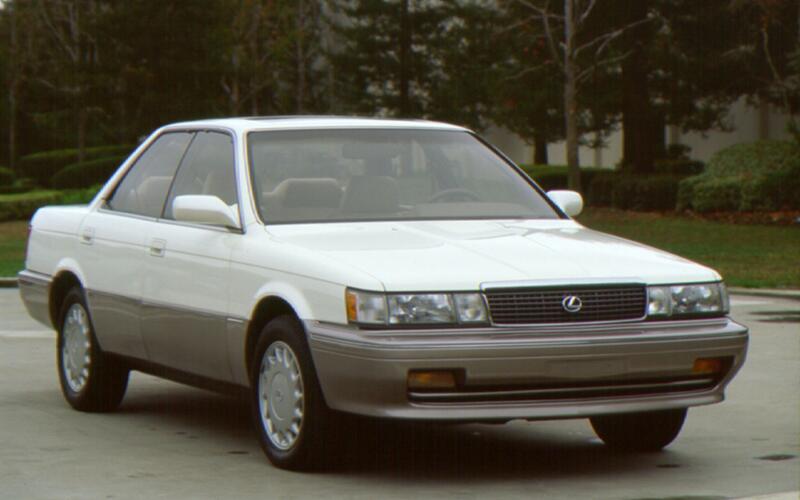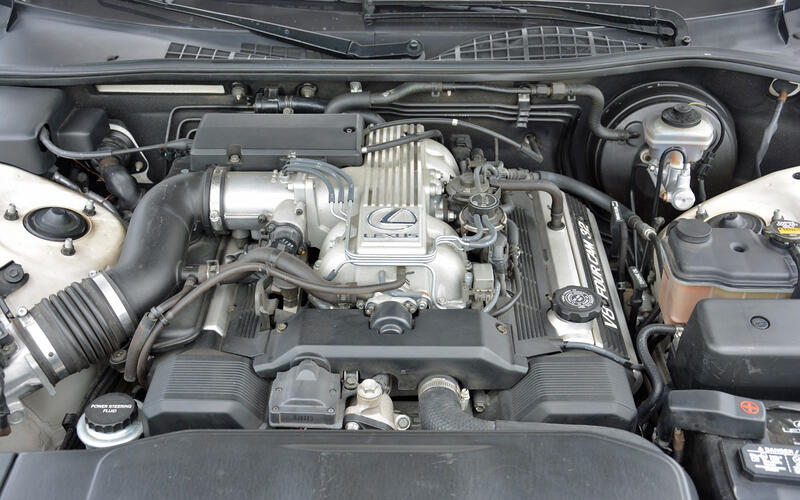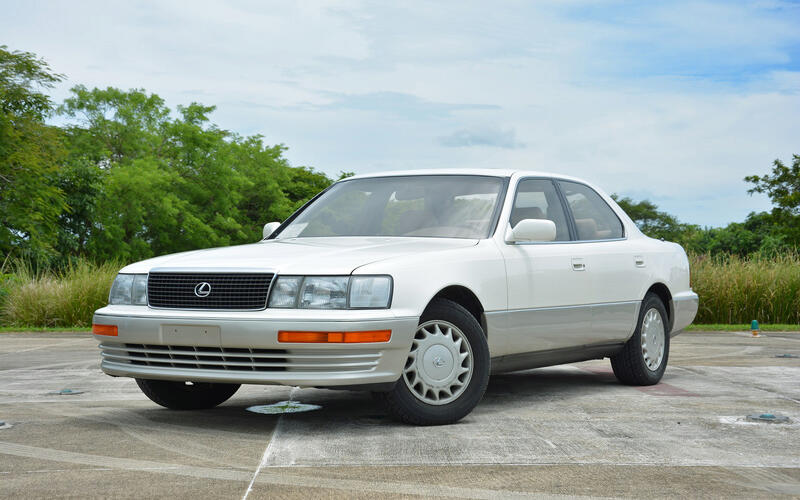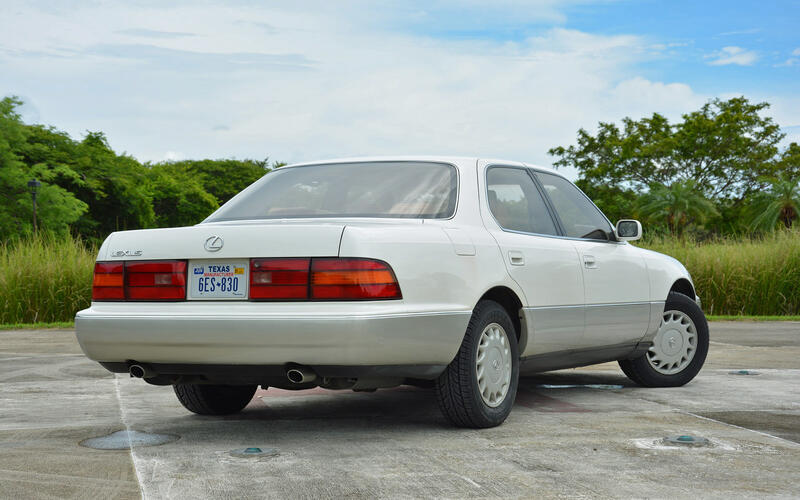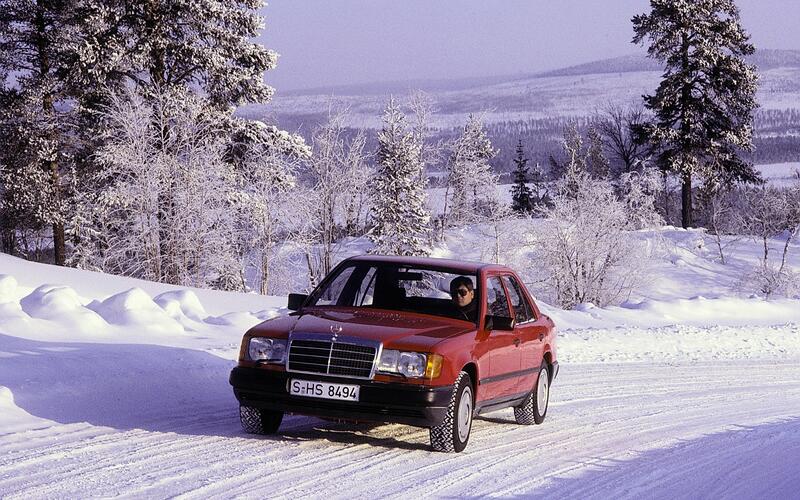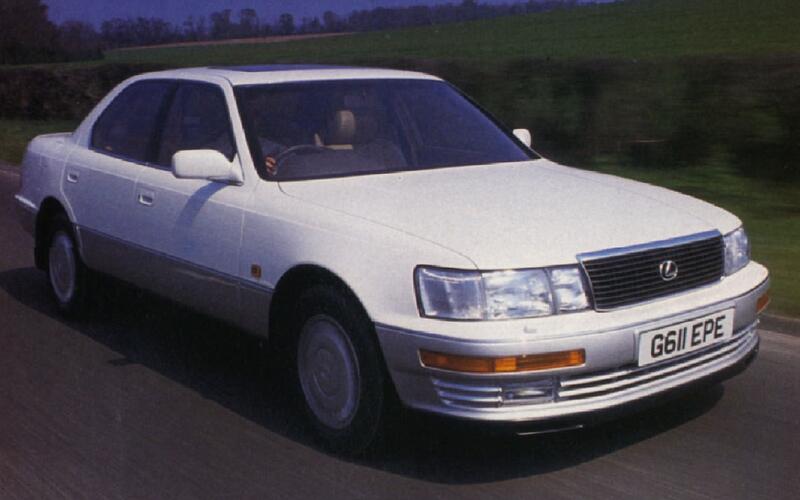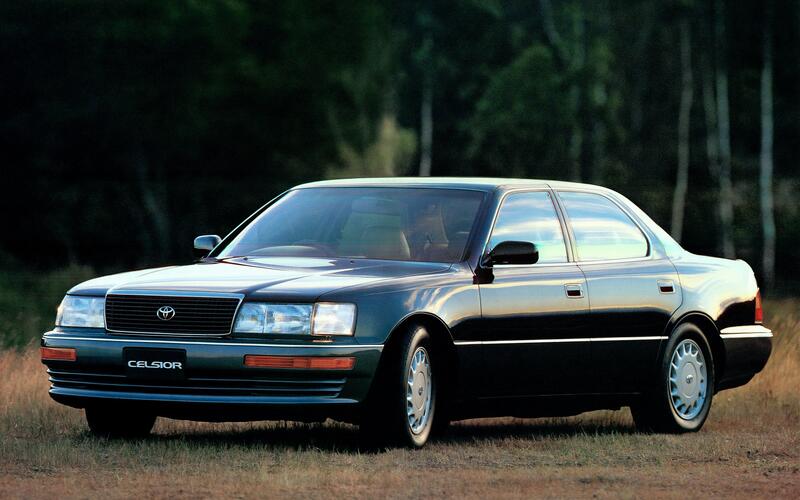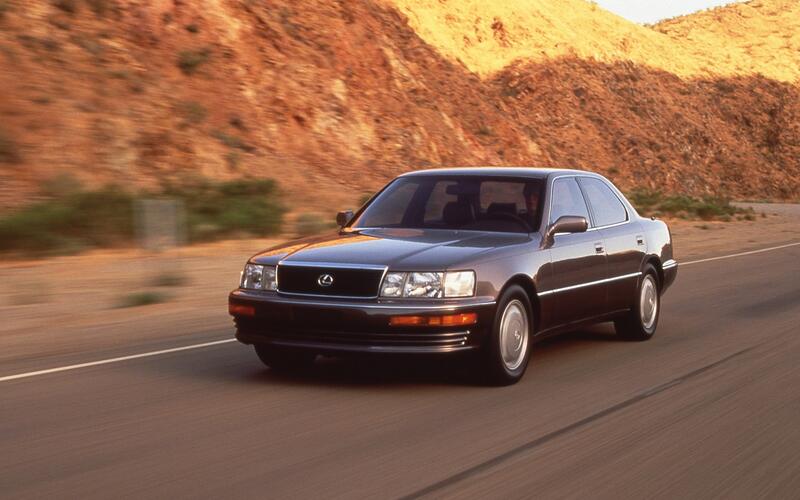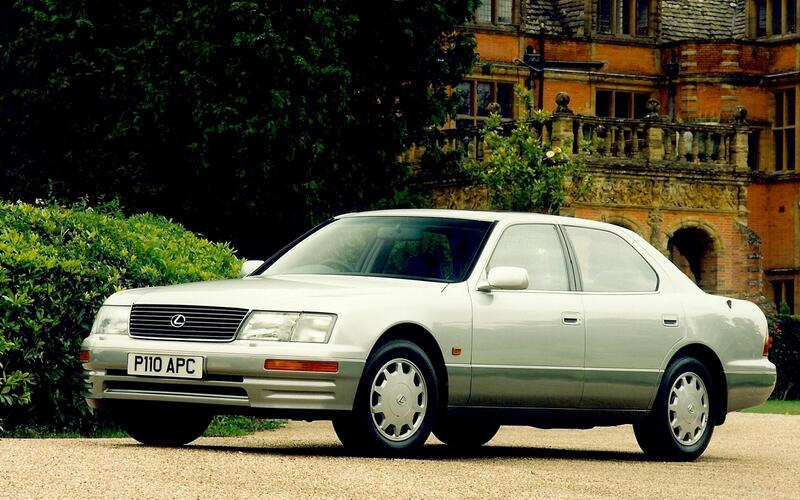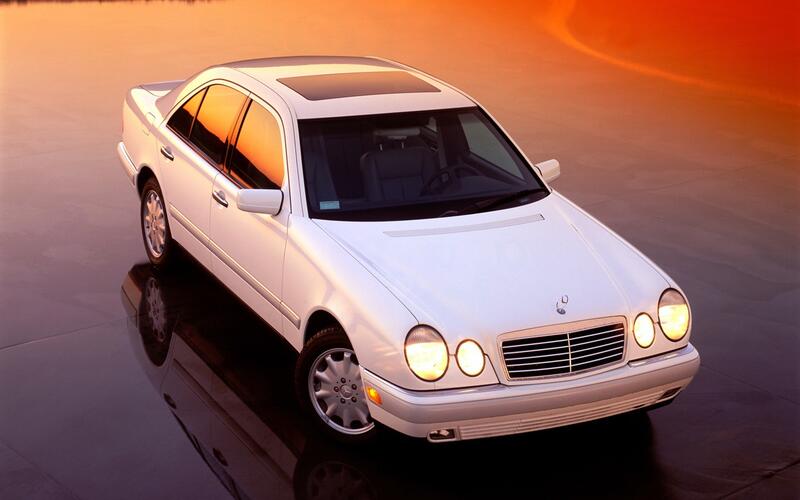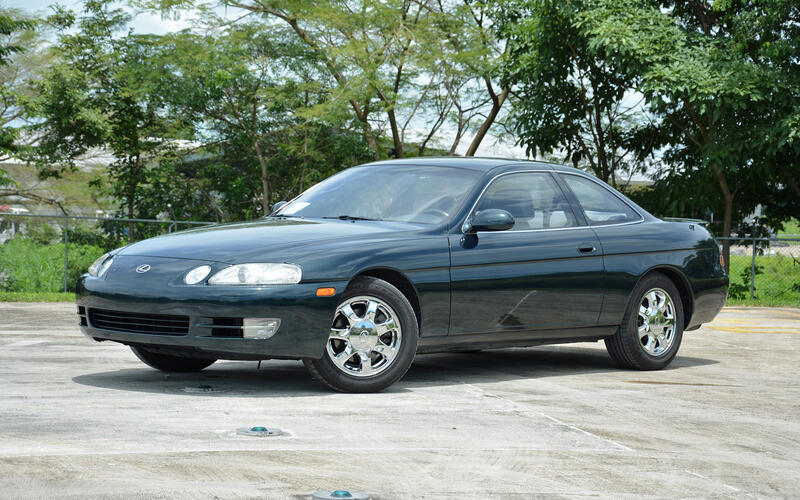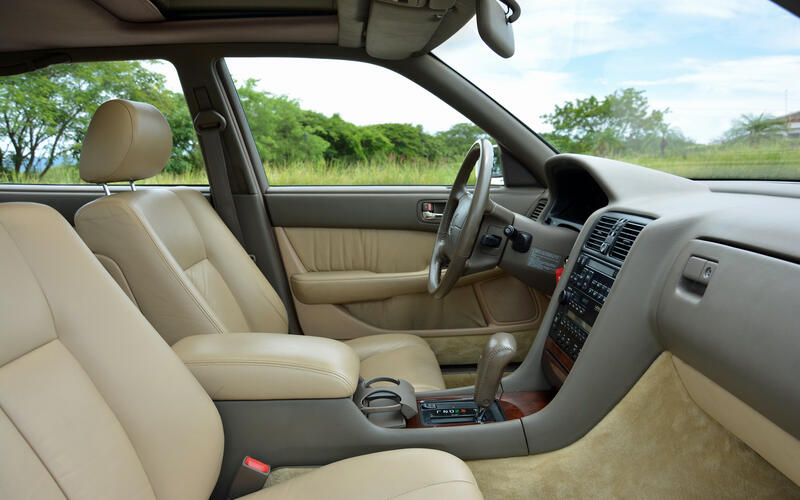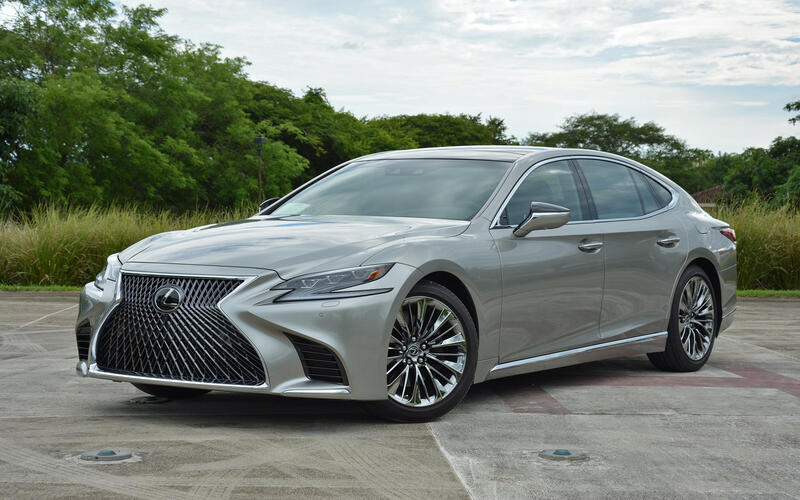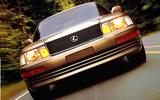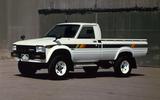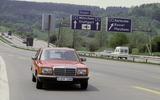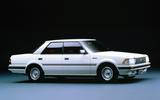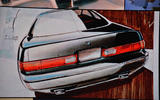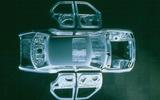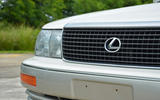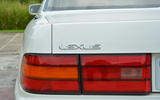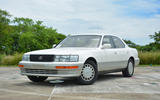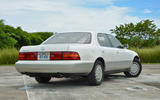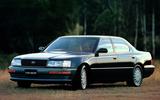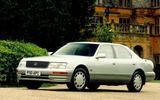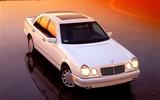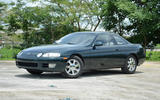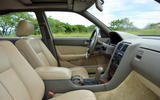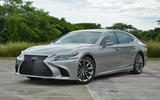 Slide of
Slide of
The luxury car class forever changed when Toyota launched its Lexus division in 1989.
Toyota’s brightest engineers and designers were asked to tap into a bottomless well of money to create one of the most luxurious cars in the world. The model had to establish Toyota as a credible name in the luxury car segment while giving loyal customers a good reason not to buy German when their income allowed them to shop for a nicer car. These guidelines shaped the original Lexus LS and continued to influence the brand as it grew during the 1990s.
We’re celebrating 30 years of the Lexus LS by looking at how it was developed, by examining the impact it had on the luxury car market and by driving a first-generation example to find out how it has aged:
 Slide of
Slide of
Conquering America (1970s)
Toyota made huge inroads into the American market during the 1970s; it overtook Volkswagen as the number one car importer in 1975. Commuters loved fuel-sipping models like the Corolla and off-roaders praised the Hilux pickup’s ruggedness (pictured).
However, the Japanese company’s research clearly showed buyers left the brand when their income allowed them to shop for a more expensive car. With a steady foothold in the United States, Toyota began looking for ways to move into the luxury car market in the country.
 Slide of
Slide of
Circle F (1983)
Moving upmarket was a bold decision. In the early 1980s, Japanese manufacturing was primarily associated with cheap, mass-produced products, not desirable luxury goods. Knowing he faced an uphill battle, Toyota boss Eiji Toyoda (1913-2013) launched the luxury car project in August 1983 by assembling a small team of trusted engineers, designers and executives.
Many thought he was crazy when he asked for a car capable of challenging anything made by Mercedes-Benz, including the S-Class (pictured). Insiders referred to the top-secret project as Circle F; F stood for flagship.
 Slide of
Slide of
An unprecedented effort (1984)
“We need something bigger and we need it today,” wrote Norman Lean, the vice president of Toyota’s American division, in a memo sent to his higher-ups in Japan. The Crown (pictured) wasn’t posh enough to challenge Mercedes-Benz and the hand-built Century limousine would have cost far too much. There were no two ways around it: Toyota needed to design a car from scratch.
The Circle F project started small: it consisted of a 15-person planning team in early 1984, but it didn’t stay that way for long. It ultimately grew to include a roster of 1400 engineers, 2300 technicians, 60 designers, and 220 support workers. These men and women were split into 24 engineering teams. Toyota had never allocated such a tremendous amount of resources to the development of a car but bringing a flagship into showrooms as quickly as possible became its main priority in the early 1980s.
 Slide of
Slide of
The design brief (1984)
Ichiro Suzuki (born 1937), the project’s chief engineer, outlined an ambitious design brief. The flagship model needed to have a 155mph top speed, a 0.28 drag coefficient and emit 58 decibels at 60mph. Achieving these goals required taking a different approach to designing even the most mundane components.
Lexus notably designed a new type of carpet to save about one kilogram and it injected structural foam into the A-pillars to make them stronger while keeping wind noise in check. Suzuki asked to personally approve every change that added the slightest amount of weight to the car. PICTURE: Early LS prototype.
 Slide of
Slide of
Stretching Toyota (1986)
Suzuki put Yoshi Ishizaka and Bob McCurry in charge of creating a business and marketing plan for the future Toyota flagship in the United States. This was one of Circle F’s most important missions because everyone knew America would be the car’s main market, likely by a very wide margin. The research they began carrying out in 1986 unequivocally concluded American motorists wouldn’t be willing to trade in their Mercedes-Benz or BMW for a Toyota.
The firm’s emblem didn't represent wealth and status; a three-pointed star did. McCurry and Ishizaka were convinced that, to succeed, Toyota’s flagship had to be sold under a different brand and sold through standalone dealerships. This was a hard pill to swallow for some Toyota higher-ups. How could the company's flagship not wear its name?
 Slide of
Slide of
The name game (1986)
Toyota enlisted the help of consultants and agencies to help Circle F find a new brand. 219 names emerged and four were short-listed: Vectre, Verone, Caliber and Alexis. Alexis turned into Lexus over the course of further discussion and designers started sketching the new brand’s logo, an L inside an oval.
 Slide of
Slide of
Is it car or software? (1988)
Toyota's plans to reveal its flagship, the newly-named Lexus LS, during the 1989 Detroit motor show derailed when it got sued by Mead Data Central in late 1988. The US software company argued Lexus sounded too much like Lexis, its legal research system (later renamed LexisNexis), and asked for $100 million (about £180 million in 2019 money) plus fees for 15 years’ worth of damages. The court agreed that, if Lexus failed, it would damage the reputation of Lexis.
Toyota had a nearly finished car, an unveiling date locked in but no name. The firm appealed the ruling and Mead allowed it to use the Lexus name for the first, last and only time during the 1989 Detroit show. In March, after the LS made its public debut, the appeals court decided a Lexus-branded car and a Lexis-branded piece of software had little in common and gave Toyota permission to continue using the name.
 Slide of
Slide of
Introducing Lexus (1989)
The Circle F team busily put the final touches on the LS while lawyers quibbled over a vowel. They made about 450 prototypes and tested them for millions of miles in the world’s most hostile regions. 100 of those were crash-tested because safety was a huge priority for engineers. At last, nearly six years after the first Circle F meeting, Toyota introduced the Lexus LS 400 at the 1989 Detroit motor show.
Toyota ended up launching a new brand, not just a new car, and it didn’t want the LS to stand on its own. It Lexus-ified the Camry into the ES 250 (pictured) to give the brand a cheaper entry-level model and presented it alongside the LS in Detroit. While the ES tilted towards the mundane side of the scale, the LS generated a mostly positive response from the public and the press when it broke cover.
 Slide of
Slide of
The original Lexus LS, by the numbers (1989)
Lexus began selling the LS in America in August 1989 with a shipment of 1000 cars that were spoken for almost immediately. European sales began the following year. In 1990, the LS carried a base price of £34,250 (about £84,000 in 2019 money).
It came generously equipped with a long list of creature comforts and it was only offered with a quad-cam, 4.0-litre V8 rated at 241bhp. The cavalry travelled to the rear wheels via a four-speed automatic transmission equipped with its own ECU.
 Slide of
Slide of
The recall (1989)
Lexus argued its cars were the product of a “relentless pursuit of perfection.” The credibility of this claim was called into doubt in December 1989 when Toyota announced plans to recall every single LS sold in the United States since September of that year (over 8000 units) in order to fix three separate problems. Early customers complained that the cruise control sometimes didn’t disengage, that the plastic cover around the third brake light warped in the heat and that an electrical problem drained the battery. Recalls happen, even to cars that cost over $1 billion to develop.
None of these problems were major but they gave Lexus a nasty black eye. It planned to stand out from its rivals by delivering a reliable, problem-free car. Decision-makers saw the issues plaguing the LS as an opportunity to prove the firm’s commitment to keeping its customers satisfied. Lexus issued the recall voluntarily instead of waiting for the American government to order the campaign and it trusted its dealers to fix the problems as quickly and as seamlessly as possible.
 Slide of
Slide of
Damage control (1989)
Lexus officials knew the recall could sink the brand so they used it to their advantage. “We took a big map and pinpointed any customer that was more than 200 miles away from a dealer. We made special arrangements for dealers to take care of their car at their house,” remembered Richard Chitty, one of the executives who helped create Lexus, during the brand’s 30th birthday celebrations.
Dave Illingworth, the firm’s general manager at the time, wrote a letter to each of the 8000 affected customers to personally apologize for the inconvenience. “We knew we had these first 8000 or so people who bought LS 400s and we were concerned about what they would think about us. Then, there was a sense of putting the customer first. I sat at the dining table over Christmas and signed about 8000 letters,” he remembered in 2019. The recall could have driven customers away from Lexus and back into German-flagged showrooms. Instead, Illingworth and his team cunningly used it to build brand loyalty.
 Slide of
Slide of
The competition (1990)
So how did the £34,250 UK entry of the LS 400 price compare to the competition? Well, at the same time a BMW 535i SE was £27,495 while a larger 735i SE was £37,500, so around halfway house there. Audi's (now mostly forgotten) V8 was a lot more expensive, at £40,034. Jaguar would sell you a XJ6 Sovereign for £32,500.
A Mercedes 300E-24 would set you back £32,340, while the larger S-Class 420SE was £37,430. But as Lexus was at pains to point out, the LS 400 was much better equipped as standard than most of its rivals, especially the German ones; this was after all the era when Mercedes charged extra for a basic radio on some of its models.
 Slide of
Slide of
Autocar’s first road test (1990)
Autocar tested the Lexus LS in 1990 and walked away mostly impressed. “On the right road – a long, smooth, straight one – it is the quietest, most relaxed and most refined car we have ever had the pleasure to drive. Its engine is a marvel and its ride under such conditions is extraordinary,” we wrote.
However, we felt it lacked a touch of class to stand out from comparably-priced models made by Jaguar, BMW and Mercedes-Benz. “Underneath it all, this exceptionally good car is still a Toyota, and it shows,” we concluded.
 Slide of
Slide of
Toyota’s LS (1990s)
Ironically perhaps, at first Toyota chose not to introduce the Lexus brand in its home country of Japan. Instead, the original LS went on sale as the Toyota Celsior. It was nearly identical to the LS 400 sold in the United States and in Europe but it wore Toyota emblems on both ends. The Japanese-spec Celsior was also optionally available with more luxury equipment than the LS, including reclining rear seats.
Toyota sold the LS as the Celsior until 2006, the year after it introduced the Lexus brand in Japan.
 Slide of
Slide of
If it ain’t broken… (1990s)
The original LS changed little during its production run. It received a minor face-lift, a standard passenger-side airbag, bigger wheels and larger brakes for the 1993 model year. An air suspension with a self-leveling function joined the list of options for the 1994 model year.
 Slide of
Slide of
The second-generation LS (1996)
1995 brought a new, second-generation LS wearing a familiar look. Lexus chose not to make drastic design changes because the original model sold well. The second LS nonetheless received several improvements including a 260bhp V8 that used less fuel and a more spacious interior thanks in part to a slightly longer wheelbase.
 Slide of
Slide of
The LS effect (1990s)
Lexus caught luxury brands from Germany and Japan completely off-guard. Mercedes-Benz made several last-minute changes to the W140-generation S-Class it planned to release for the 1992 model year and it notably embarked on a widespread cost-cutting campaign to prevent customers from defecting to Lexus. The W210-generation E-Class (pictured) released in the United States for the 1996 model year cost between 6% and 10% less than its predecessor while C-Class prices dropped by about 1%.
This strategy worked to a degree but it created some of the brand’s most problematic cars. Rust and electronic issues plagued the W210-generation E-Class, for example.
 Slide of
Slide of
The Lexus star rises (1990s and 2000s)
In hindsight, the original LS helped Lexus become the most successful of the three Japanese luxury brands launched during the late 1980s. By quickly expanding its line-up with cars like the SC (pictured), it gained a foothold in key markets around the world, including Europe. Acura has never sold a car in Europe, though some of its models have joined the Honda line-up, and Infiniti announced plans to leave the European market in 2020 after struggling for years.
The United States has always been its largest market, though. Lexus sold its millionth car in America in 1999 and it outsold Mercedes-Benz for the first time in 2001. Other carmakers (like BMW, Cadillac, Audi and Lincoln were even further behind). 12 years after its inception, it had reached its goal of becoming the top-selling luxury car brand in the United States. In 2018, Lexus sold 298,302 cars in the US, outselling Audi by a wide margin and only marginally behind BMW, but a good 15% behind Mercedes.
In truth though Lexus has always been much more successful in America than in Europe. Lexus sold just 12,405 cars in the UK in 2018, compared to 172,238 sales for Mercedes and a very similar number for BMW.
 Slide of
Slide of
Has the LS stood the test of time? (2019)
Last week Autocar slipped behind the wheel of an original LS from the Lexus collection to find out if it has stood the test of time. The dashboard’s design has evidently aged, and the instrument cluster looks shockingly basic (and almost Toyota-like), but the build quality remains excellent. This holds true outside, too; the panel gaps on this 17,000-mile, never-wrecked example are narrower and more regular than those on some cars brand new in 2019.
The LS is still quiet by modern luxury car standards and its performance is adequate. It remains a pleasant place to travel in 30 years after its launch.
 Slide of
Slide of
The LS in 2019
Lexus released the fifth-generation LS (pictured) in 2017. It looks nothing like the original model and it’s positioned as a direct rival for the Mercedes-Benz S-Class, the BMW 7 Series and the Audi A8, not as a cut-rate alternative. It’s no longer available with a silky-smooth V8 engine. Lexus offers its flagship with either a twin-turbocharged V6 or a hybrid powertrain. And yet, it shares more than a name with the first LS.
The original LS had zero performance pretentions. It was all comfort, all the time. The 2019 model has inevitably gained a sport mode, and it serves 414bhp in its most powerful configuration, but it’s much happier to cruise serenely while keeping road imperfections away from the passengers. It’s not a car that likes to be rushed around a corner. The first LS delivered a similarly laid-back driving experience.
Lexus charges £73,000 for an entry-level 2019 LS in the UK, whereas the original car cost around £84,000 in 2019 money. Lexus remains a major player in the luxury car market in the US, and shows what can be achieved with enough effort, resources and application, even when stacked up against storied brands with much longer-running brand identities.
The LS helped make Lexus the most successful Japanese luxury brand
Advertisement


